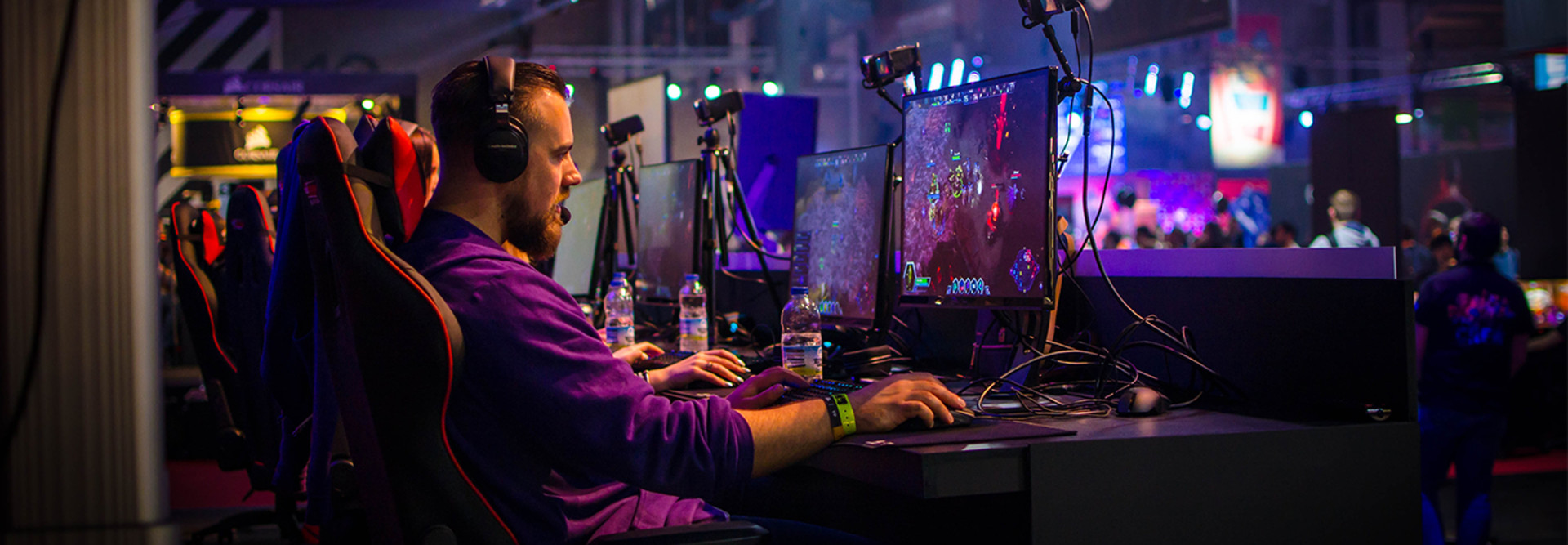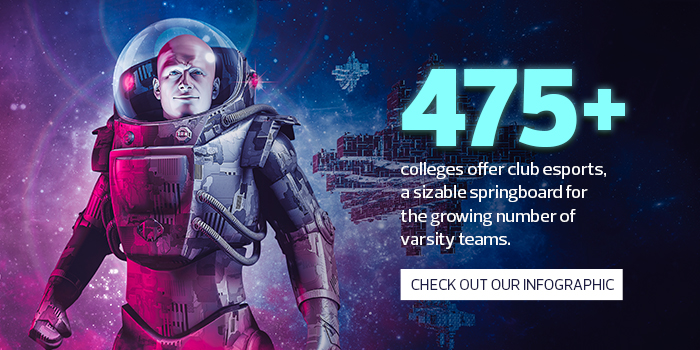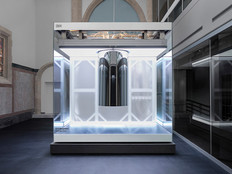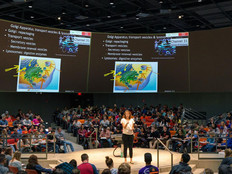UB Tech 2019: How to Start an Esports Program on Your Campus
The word is out in higher education — esports is huge — and now campus staffers are asking: “How do we bring this to our college?” Representatives of Midwest eSports and HP’s OMEN set out to answer their nuts-and-bolts questions at a UB Tech Conference session in Orlando, Fla.
Ramsey Jamoul is the CEO of Midwest eSports, which hosts collegiate and semiprofessional esports tournaments around the United States.
MORE FROM EDTECH: Learn about the best CPUs for college esports arenas.
Joshua Pann is a college esports specialist for HP. They presented “Esports Technology: Hardware, Infrastructure and Games” on Tuesday.
With 1,700 high schools registered with the High School Esports League and more than 150 varsity programs in the National Association of Collegiate Esports, the numbers tell the story of esports’ popularity, said Jamoul, whose company hosted 45 tournaments this year and is aiming for more than 100 next year.
Which Esports Game Should My College Choose?
League of Legends, Overwatch and Fortnite are by far the most popular games, Jamoul said, but they may not be suited for all collegiate programs.
One way to evaluate options is to go to Twitch, the video game streaming platform, or to reach out to one of the leagues that host esports tournaments. College esports is a relatively new phenomenon, so it’s still evolving, and that means campus administrators want to keep flexibility in mind when developing their programs, Jamoul said.
“We don’t necessarily know where it’s going to end up, but that’s also the benefit of esports,” he said. Unlike an athletics venue that can host only one particular sport, an esports arena has the versatility to support any game.
“The most important part is choosing the right video games that are going to last,” he said.
What Are College Esports Leagues?
The main collegiate leagues are Tespa, the College League of Legends and the Collegiate Starleague. Colleges can register a team with a league, which puts teams together for matches, tracks standings, coordinates with administrators and provides the overall structure as teams progress toward a final championship.
Some colleges are self-organizing, Jamoul said, partnering with other institutions in their traditional athletic conference and creating seasons of play.
“You can run esports year-round,” he said. “You can have a fall season, a spring season and a preseason.”
What Do I Need for an Esports Facility?
“The way I like to think about building an esports facility is that your starting block is the competition station,” Pann said. “That represents everything your athlete would need to sit down and start playing right then.”
In addition to a desk and CPU, stations include a display, mechanical keyboard, adjustable mouse, headset with microphone and gaming chair. Colleges typically design the space around how many players they want to have practicing at a time, Pann said.
Of all the esports equipment in which a college might invest, the display impacts performance the most, he said. The standard size, which professionals also use, is 24 to 25 inches with a minimum refresh rate of 144 hertz.
“That’s the current standard,” he said. “We’re moving toward a 240-hertz refresh rate for the next generation of standards. Most monitors you see on campus are 60 hertz, so if you use that, you’re at a significant disadvantage.”
Gaming mice, which are adjustable, are preferred because players can adapt them to individual preferences, Pann said.
“People are very particular and very specific,” he said. “They might want mice that are very sensitive or not that sensitive.”
When evaluating the specifications of desktop CPUs, Pann said administrators should keep flexibility in mind: “You need to balance the needs of current titles with the potential demands of future titles.”
MORE FROM EDTECH: Check out why esports should be on your IT team's radar.
What About Networking for College Esports?
When it comes to the networking that’s necessary to support esports, Pann said, “There is a lot of misconception. I think people assume that gaming takes up a lot of bandwidth and the reality is that it doesn’t.”
According to Pann, 32 gamers will use as much bandwidth as one student streaming a 1080-pixel video on Netflix. What does matter, he said, are wired connections.
Firewalls also are a consideration, he said, and esports coordinators should consult their campus IT staff to ensure that traffic flow won’t be impeded.
“You will have to talk with them to make sure the right ports are open,” he said.
Jamoul said that in his experience, most colleges don’t see an issue arise from firewalls.
While Pann said he does recommend ergonomic equipment, racing-style chairs aren’t necessary. Some colleges go that route and customize seating with school colors and logos, but he said standard office chairs can serve players just as well.
So, What Will an Esports Facility Cost?
To determine the correct room size and number of competition stations, Pann said to start with the games that a team will play, since different games use different numbers of players. Overwatch uses six-player teams, while League of Legends relies on five players.
Most of the time, he said, colleges will repurpose an existing space on campus, such as a classroom or computer lab.
To give attendees a rough idea of potential budgets for equipment, Pann said an average entry-level space might cost $44,000, a midtier space $61,000 and a high-level space $87,000.
For those who haven’t attended an esports tournament in person, Jamoul said, that can make all the difference in appreciating its appeal. With professional-caliber hosting, action replays and color commentary, he said, “Once people experience it for the first time, that’s when it clicks.”
Follow EdTech’s coverage of the 2019 UB Tech Conference here.










